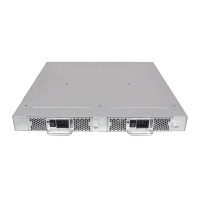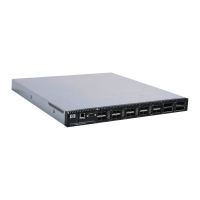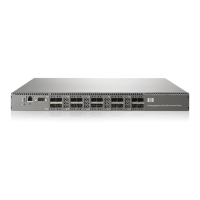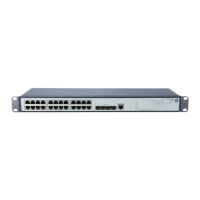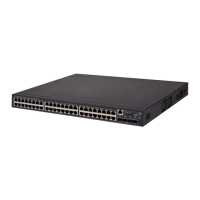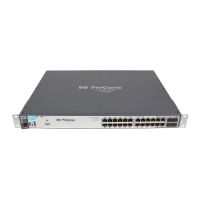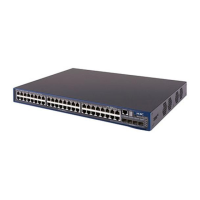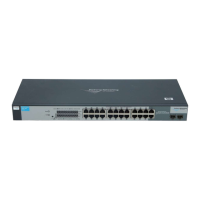Fabric OS Administrator’s Guide 67
53-1002446-01
Inter-switch links
4
Buffer credits
In order to prevent the dropping of frames in the fabric, a device can never send frames without the
receiving device being able to receive them, so an end-to-end flow control is used on the switch.
Flow control in Fibre Channel uses buffer-to-buffer credits, which are distributed by the switch.
When all buffer-to-buffer credits are utilized, a device waits for a VC_RDY or an R_RDY primitive
from the destination switch before resuming I/O. The primitive is dependent on whether you have
R_RDYs enabled on your switch using the portCfgISLMode command. When a device logs in to a
fabric, it typically requests from two to sixteen buffer credits from the switch, depending on the
device type, driver version, and configuration. This determines the maximum number of frames the
port can transmit before receiving an acknowledgement from the receiving device.
For more information on how to set the buffer-to-buffer credits on an extended link, refer to Chapter
23, “Managing Long Distance Fabrics”.
Virtual channels
Virtual channels create multiple logical data paths across a single physical link or connection. They
are allocated their own network resources such as queues and buffer-to-buffer credits. Virtual
channel technology is the fundamental building block used to construct Adaptive Networking
services. For more information on Adaptive Networking services, refer to Chapter 21, “Optimizing
Fabric Behavior”.
Virtual channels are divided into three priority groups. P1 is the highest priority, which is used for
Class F, F_RJT, and ACK traffic. P2 is the next highest priority, which is used for data frames. The
data virtual channels can be further prioritized to provide higher levels of Quality of Service. P3 is
the lowest priority and is used for broadcast and multicast traffic. This example is illustrated in
Figure 7.
Quality of Service (QoS) is a licensed traffic shaping feature available in Fabric OS. QoS allows the
prioritization of data traffic based on the SID and DID of each frame. Through the use of QoS zones,
traffic can be divided into three priorities: high, medium, and low, as shown in Figure 7. The seven
data virtual channels, VC8 through VC14, are used to multiplex data frames based upon QoS zones
when congestion occurs. For more information on QoS zones, refer to Chapter 21, “Optimizing
Fabric Behavior”.
